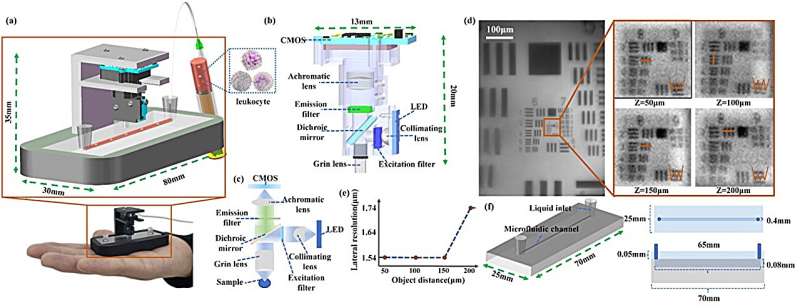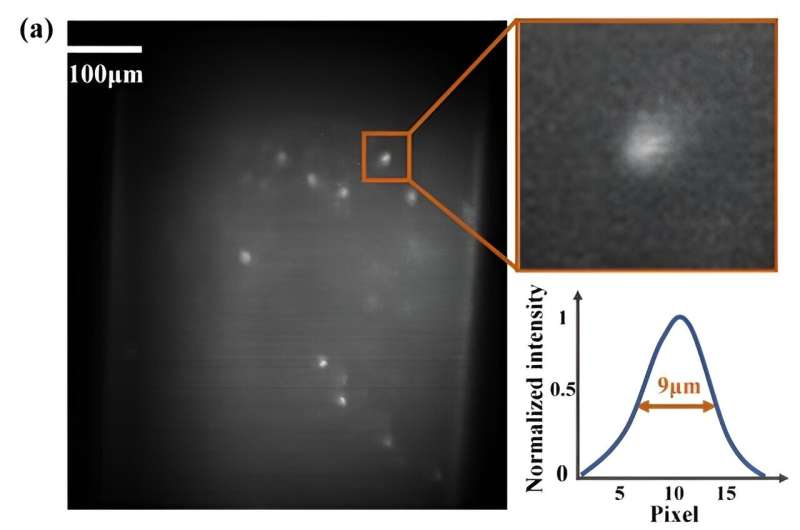This article has been reviewed according to Science X's editorial process and policies. Editors have highlighted the following attributes while ensuring the content's credibility:
fact-checked
proofread
Optofluidic hematology analyzer enables home monitoring of health status

The deviations in blood cell concentration beyond reasonable ranges may indicate the presence of certain diseases within the body. For example, infections, inflammatory, malignant blood diseases, and AIDS (acquired immune deficiency syndrome) can cause abnormalities in the concentration of leukocytes. Therefore, the detection of blood cell concentration contributes to the diagnosis, treatment, and prognostic management of certain diseases.
However, conventional methods for assessing blood cell concentration, such as using a hemocytometer, must be combined with an optical microscope. On the other hand, flow cytometers allow high-throughput, accurate, and rapid sorting and counting of blood cells in fluids. Commercial flow cytometers are sophisticated and bulky with roughly 9–30 kg in mass.
As a result, the two corresponding pieces of equipment are often used in laboratories and hospitals, hindering the spread of point-of-care testing (POCT) and delaying patient's treatments. Therefore, the development of a portable smart blood cell analyzer holds significant importance and promising prospects.
The authors of an article published in Opto-Electronic Science propose a palm-size optofluidic hematology analyzer based on a miniature fluorescence microscope commonly employed in neuroscience and behavioral research and a microfluidic platform to lighten the device to improve its portability.
This gadget has a dimension of 35 × 30 × 80 mm and a mass of 39 g, less than 5% of the weight of commercially available flow cytometers. In addition, intelligent leukocyte information enhancement and concentration detection have been realized through the integration of image processing and leukocyte counting algorithms.
The researchers compared the leukocyte concentration measurement between our approach and a hemocytometer using the Passing-Bablok analysis and achieved a correlation coefficient of 0.979. Through Bland-Altman analysis, they obtained the relationship between their differences and mean measurement values and established 95% limits of agreement, ranging from -0.93×103 to 0.94×103 cells/μL.

In comparison to a conventional hemocytometer, this device demonstrates an error in calculating leukocyte concentration of less than 10%, aligning with the accuracy requirements specified by the UK National External Quality Assessment Service (NEQAS) and the Clinical Laboratory Improvement Amendments of 1988 (CLIA-88).
The analyzer allows POCT of patients' blood cells away from the hospital or laboratory environment and enhances medical diagnosis in remote or deprived areas. For example, performing blood cell counts for astronauts in space environments holds significant importance in the fields of radiation biology and microgravity biology.
However, in such resource-limited and energy-intensive environments, the use of conventional equipment requiring chemical fuels and occupying substantial space significantly increases costs. In this context, the development of the Palm-size Optofluidic Hematology Analyzer offers a potential solution by addressing the issues of volume and weight.
More information: Deer Su et al, Smart palm-size optofluidic hematology analyzer for automated imaging-based leukocyte concentration detection, Opto-Electronic Science (2023). DOI: 10.29026/oes.2023.230018





















